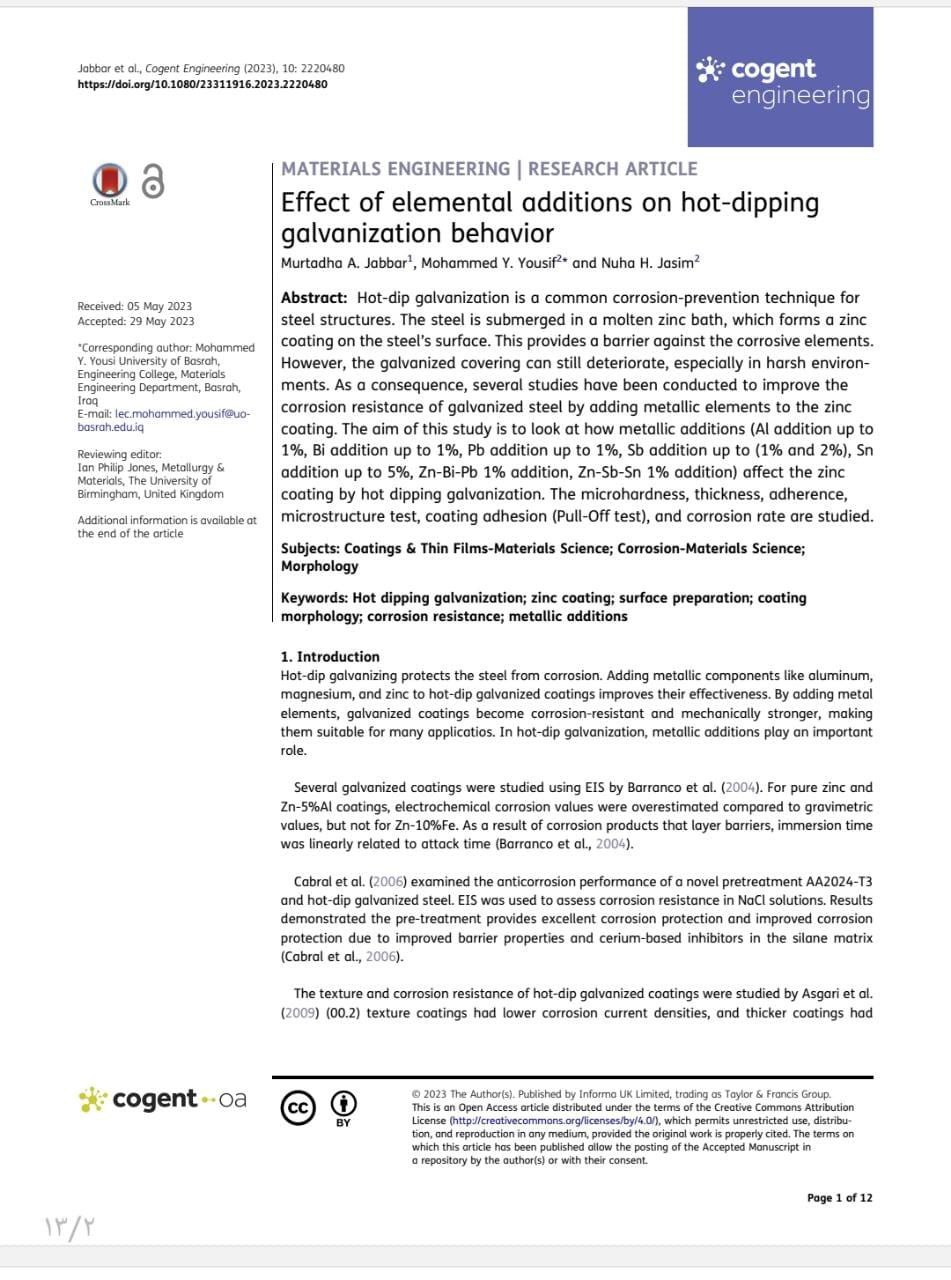
Published by Prof. Dr. Murtadha Jabbar, and M. Mohamed Youssef and Assist. Prof. Dr. Nuha Hadi Jassim, three teachers at the College of Engineering at the University of Basrah, conducted scientific research in the Cogent Engineering Journal, which is considered one of the discreet scientific journals in the Taylor and Francis publishing house.
Within Scopus Q2 containers
Entitled Effect of Primary Additives on Hot Dip Galvanizing Behavior
In this paper, hot-dip galvanizing is a common technique used to prevent corrosion in steel structures. This process consists of immersing the steel in a bath of molten zinc, which creates a layer of zinc on the surface of the steel and thus provides a barrier against corrosive agents. However, galvanized sheeting can deteriorate under different conditions. As a result, a study was conducted to improve the corrosion resistance of galvanized steel By adding elements to the zinc coating, which are aluminum, bismuth, lead, tin and antimony, where the effect of adding them on the zinc coating was reached by hot-dip galvanizing technique by studying different properties such as microhardness, thickness, adhesion, microstructure, coating cohesion (withdrawal test). , and corrosion rate











